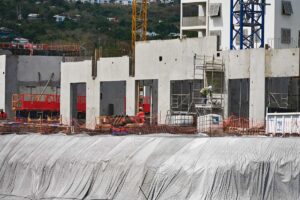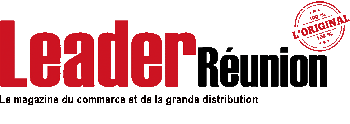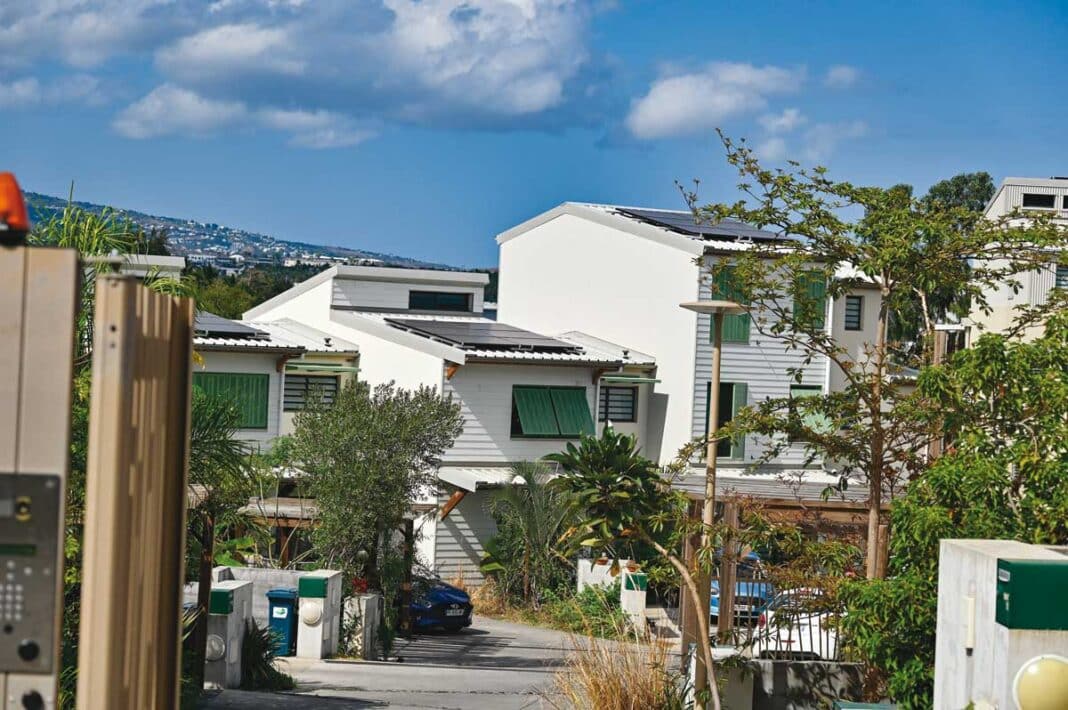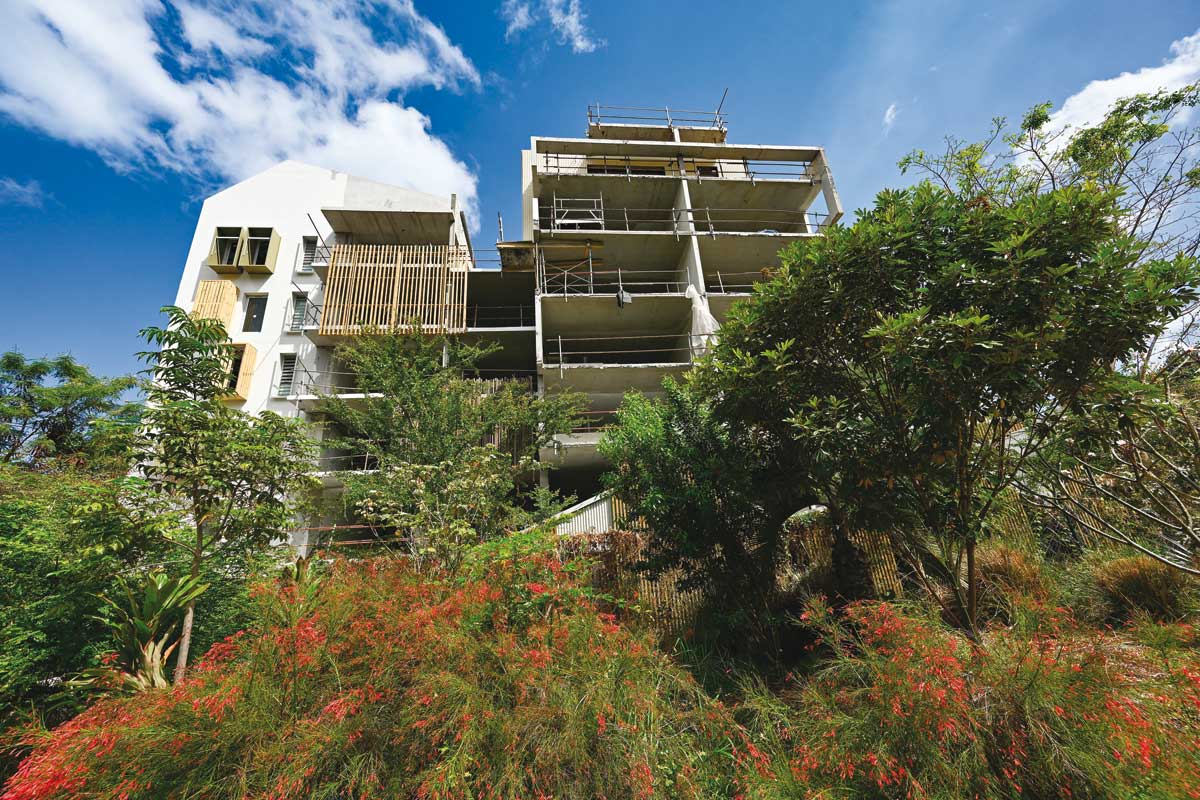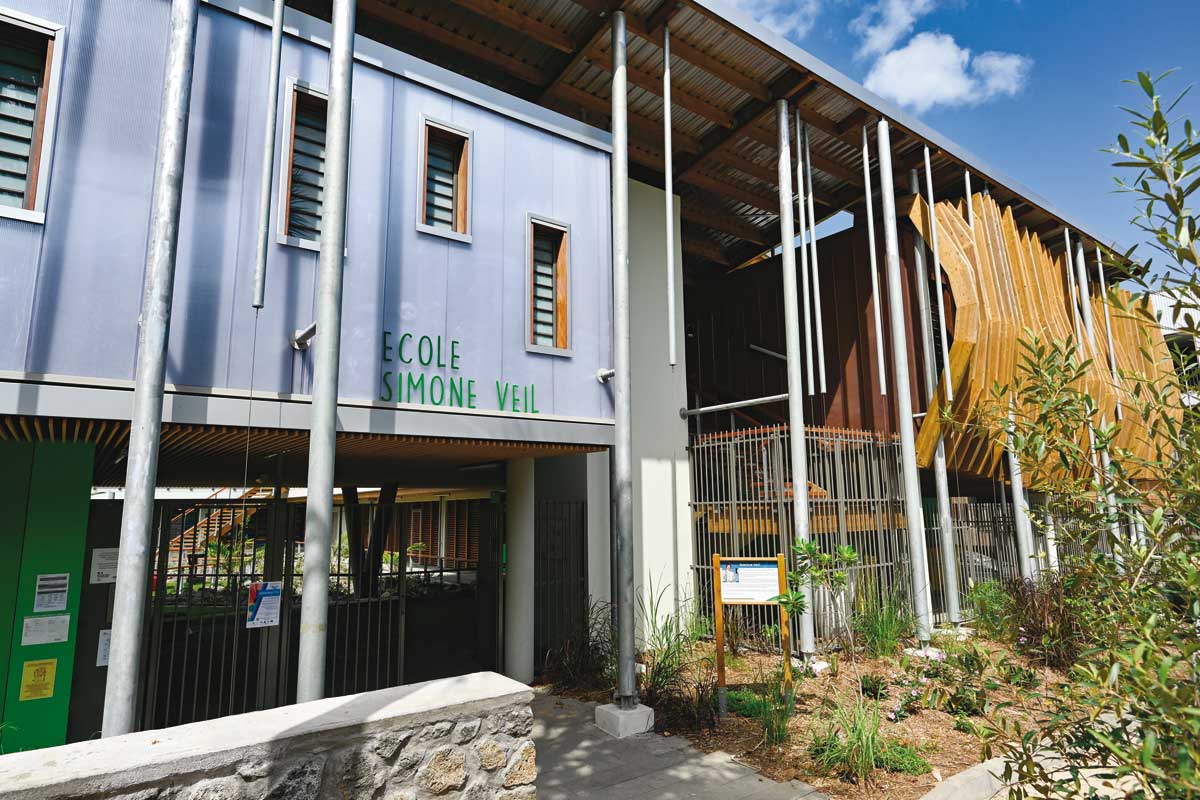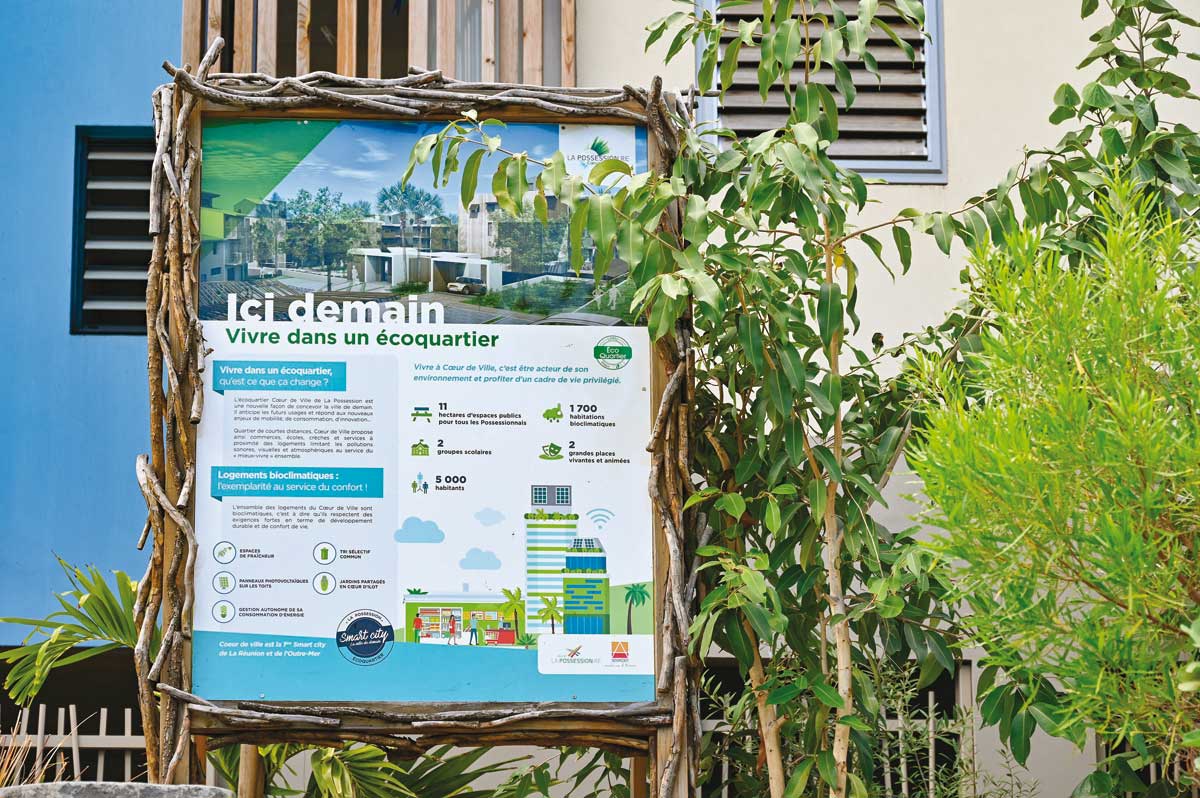Nearly 3,000 residents already live in this precursor district of La Possession., where public infrastructure is put in place, like the brand new Simone Veil primary school which had its first school year in August. Work on Kanopée — a mall project that redefines centrality and urban functionality — has been launched and will complete a model of urban innovation prefiguring the Réunion of tomorrow.
At the heart of this major real estate complex, a pedestrian network will offer, eventually, seven kilometers of walk. Already, we can discover the sequence completed and already inhabited. From the axis of the Banians promenade, gates allow you to use side paths serving the buildings, forming a network similar to that of a village. Outdoor exhibition panels tell the ins and outs of this remarkable project which reinvents Reunion urbanity. Eco-neighborhood, smart city (smart city) : all the qualifiers for energy-efficient cities, favoring soft mobility, promoting social and functional diversity, promoting greenery within the urban environment, apply here. The impression that emerges, we are not only in front of a new neighborhood, but ahead of the Reunion of tomorrow. The Meeting of a million and a half inhabitants and new generations. There is no doubt that in terms of design, d’architecture, of features, living environment, the solutions implemented in the Heart of the City will inspire. This urban creation, who has already received several international awards, mobilizes some 80 partners under the direction of its operator, the Opale-Alsei group. After Beauséjour, the Heart of the City of La Possession is a new testimony to the high level of Reunion engineering in terms of housing and contemporary tropical urban development.
A city designed to encourage mixing
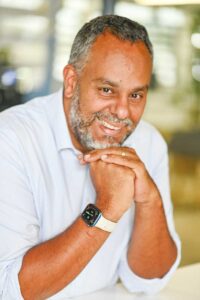
“On foot and with family”
By 2026, Cœur de Ville will extend over approximately 34 hectares. Some 6,000 residents will live there, to which must be added those who will come to work there and who will do their shopping in the Kanopée shops, future shopping area of the district. Rather young and active, like the population of La Possession, residents and visitors to the Heart of the City will practice a gentler way of living, different, friendly. Life “on foot and with family”, summarizes Jacques Tanguy. They will in fact travel on foot or by bike. Scooters will also be available for rental to get around. Individual car parks are located on the surface under the buildings, in the open air and therefore ventilated while being protected from the sun. A single basement construction is planned : that of the 388-space parking lot which will serve the Kanopée. Shared parking intended for, during the day, to people working on the site and to visitors and, in the evening, to the residents. Surface, 160 additional parking spaces will also allow you to park your vehicle for, ensuite, wander on foot.
The energy-efficient city
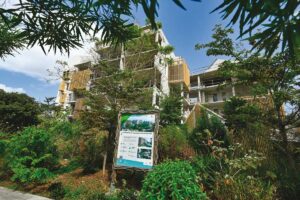
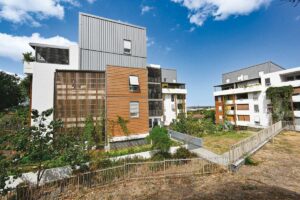
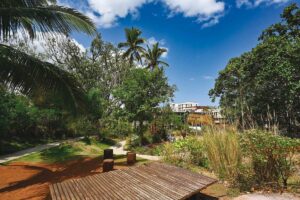
It is on this main artery irrigating the Heart of the City that the commercial and professional activity of this new district will be concentrated.. The Kanopée, with its offices (4 000 m²), its businesses (5 500 m²), its health space (2 700 m²), 1,000 homes and its walking area, will naturally become the town center of La Possession (the municipality plans to establish some of its services there). Decorated with pergolas, shade houses, of trees, the Kanopée mall will connect to the Banyan promenade. The “Heart of Villiens and Viliennes” will benefit from 35 businesses 